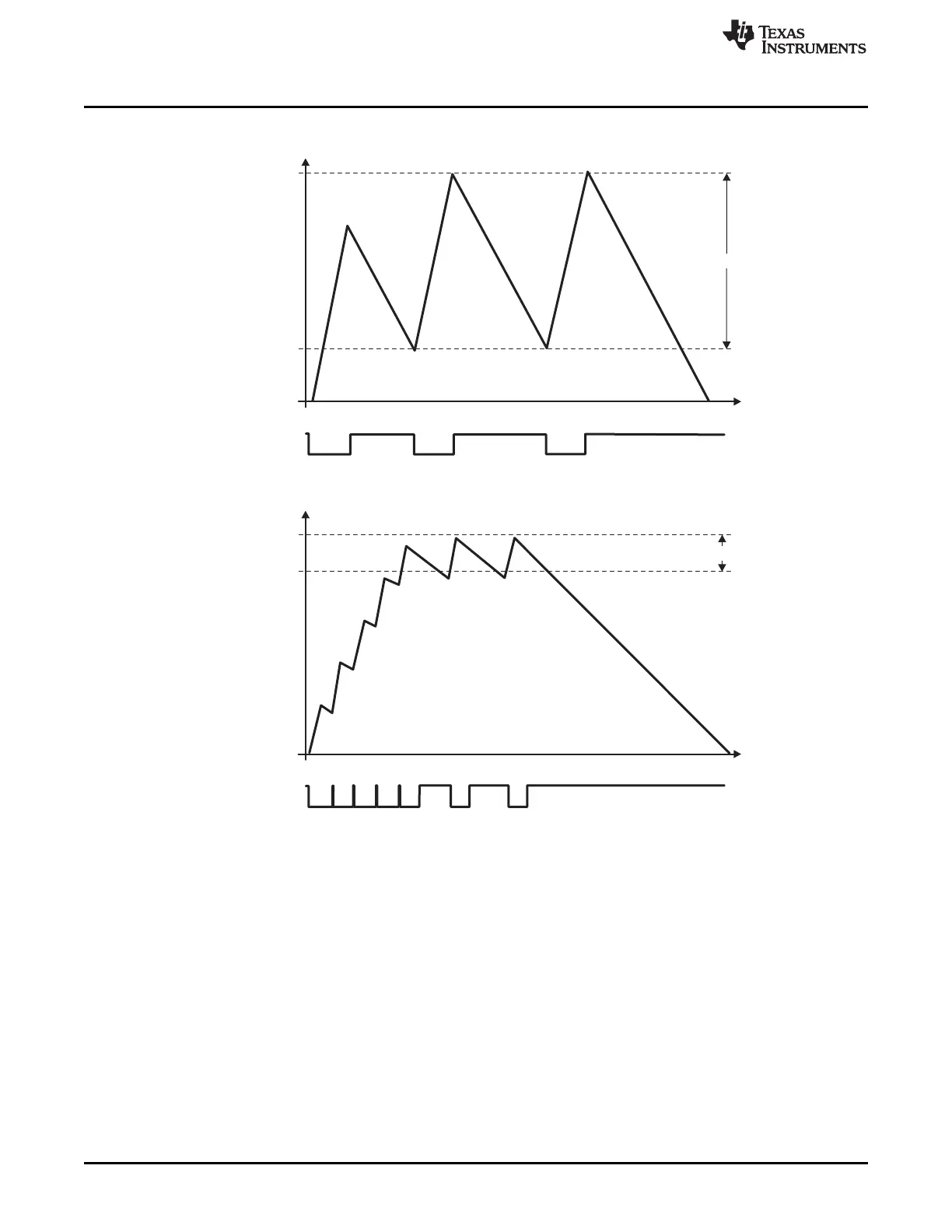TX FIFO Max
Level
Progammable
Threshold
(TXTRSH)
Zero Byte
DMA TX Active
TXTRSH
Time
TX FIFO Max
Level
Progammable
Threshold
(TXTRSH)
Zero Byte
DMA TX Active
TXTRSH
Functional Description
www.ti.com
Figure 21-14. Transmit FIFO DMA Request Generation (High Threshold)
Figure 21-15. Transmit FIFO DMA Request Generation (Low Threshold)
Note that also in DMA mode it is possible to have a transfer whose length is not multiple of the configured
FIFO threshold. In this case, the DMA draining feature is also used for transferring the additional bytes of
the transfer (see the Draining Feature subsection for additional details).
According to the desired operation mode, the programmer must set the FIFO thresholds according to the
following table (note that only the interface/OCP side thresholds can be programmed; the I2C side
thresholds are default equals to 1). Note that the thresholds must be set consistent with the DMA channel
length.
In I2C Slave RX Mode, the Local Host can program the RX threshold with the desired value, and use the
FIFO draining feature at the end of the I2C transfer to extract from the FIFO the remaining bytes if the
threshold is not reached (see the Draining Feature subsection for additional details).
3712
I2C SPRUH73H–October 2011–Revised April 2013
Submit Documentation Feedback
Copyright © 2011–2013, Texas Instruments Incorporated

